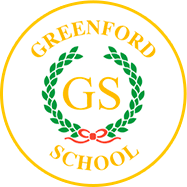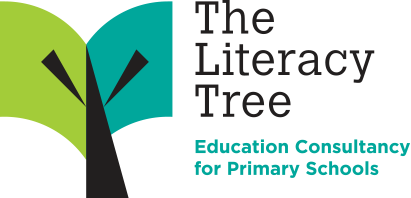English - Writing

At Greenford Primary School, enabling children to become confident, compelling and purposeful writers is something we value greatly. We focus on children being able to use the knowledge they learn, to produce purposeful, well-crafted, creative and informative written work. By the time they leave Greenford, children will understand that writing is a craft which is developed through repeated practice in order to improve.
We want our children to be part of a community of writers and authors and provide them with many different experiences so that they are moved and inspired to write.
We follow a ‘Purpose for Writing’ approach. This approach better prepares our children to recognise different genres and which purpose they are linked to and notice specific text features and structures, grammar and sentence structures, word level and choice and punctuation.
The four purposes to write being taught across EYFS to Year 6 are:
- To entertain
- To inform
- To persuade
- To discuss
We want to develop writers who:
• develop a life-long stamina and love for writing throughout the school.
• are immersed in a variety of genres and have a clear understanding of text types and their purpose.
• have a clear understanding of purpose.
• have an understanding of intended impact of writing skills and tools.
• have the ability to carefully select vocabulary with careful attention to the desired effect on the readers’ thoughts and feelings.
• Understand how to plan, draft, improve and edit their work so it can be the best it can be and achieve the desired effect.
• Are able to use and create their own success-criteria.
• Use resources independently to support their writing.
• Use their reading and word collections.
We do this by:
• Planning outcomes with a purpose and audience in mind.
• Sharing learning Journeys in the form of ‘Loops of Learning’ so that the children can see how each step of the journey contributes to the final outcome.
• Using working Walls and supporting displays as a point of reference.
• Teaching daily Quick Write sessions.
• Developing a good understanding of grammar and punctuation and its use in effective written communication.
• Using high-quality exemplars or WAGOLLs across all genres to demonstrate and unpick what quality writing looks like and the features that it includes.
• Encouraging children to use resources independently; such as prompt cards, common exception word cards, dictionaries and toolkits tailored to the children’s needs.
• Using quality texts to develop and build success criteria and rubrics by the teacher with the children.
• Ensuring that ALL children make progress
Greenford's Writing Pathway
Focus
At the start of a new focus of writing, we share the genre of the writing, the purpose of the writing, the audience and the end loop.
Stimulus
The initial stage of the writing process is to plan the end loop with an audience in mind and a real purpose for the children to write.
The next stage is to begin to lay the ‘seeds’ with the class and share the idea or context through which the children will be communicating. Teachers spark imagination through a variety of stimuli such as; pictures, films, music, letters arriving, a school trip, a message in a bottle, a visitor… the list goes on.
Plan - collect it:
The children, together with the teacher, will then complete a planning sheet together with the teacher where vocabulary will be extended either through discussion, looking through books or via drama. The children will then start to gather their ideas to write.
The purpose of this stage is for the children to be equipped with the best possible language and grammar skills to apply in their writing. This is done through; providing rich experience to developing ideas and vocabulary e.g. film, books, pictures, drama, poetry.
All children have access to quality visuals such as toolkits, dictionaries and thesaurus. Individual visuals are provided for children with ISPs that are language focused.
This stage will demonstrate differentiated outcomes linked with spelling and grammar.



Deconstruct it/ Improve it:
Children will be given opportunities to explore age-related texts to better understand the layout and features of the genre they are writing about. Use of exemplar texts (WAGOLLs – What a Good One Looks Like) are crucial to the teaching of writing. The level of language should be ambitious, challenging but within reach. WAGOLLs are an excellent way of lifting the ceiling so often put on EAL (English as an Additional Language) or SEND (Special Educational Needs/Disabilities) children’s language acquisition. Our role is to scaffold as a means of access to the rich language of the WAGOLL.
.jpg?width=1920&height=1080&scale=LIMIT_MAXSIZE)
Model it:
During this time, children watch the expert writer at work. This is a useful tool to use when new skills have been introduced in discrete grammar lessons. The children get to see how they are applied and the effect that using it has on their reader – always keeping their intended audience and purpose in mind. Teachers and TA’s will often be heard verbalising the thought and decisions processes that lie behind writing. There is always an emphasis on high quality, ambitious and aspirational writing. Similarly, teachers use plans to model how a phrase or word becomes a well-structured sentence.
We also use DADWAVERS (Sourced from the Literacy Shed) when needed as a mnemonic to help support and improve the structure of narrative writing.
By using and manipulating the vocabulary collected on the planning sheets, children can craft many different types of sentences, whilst also connecting their grammar and spelling knowledge.

Draft it - Construct it:
Once the idea has been explored and discussed the children will start to gather their ideas and write their own rough drafts. This is the stage where children organise the skills and ideas they have collected so far. Here the focus will be on structure and cohesion. It should show that children understand the structure, flow and language of their planned piece of writing. Making links between the plan-it stage and this stage is crucial for them to see the reason behind planning.
Talk is key! In every class across the school, the start of all writing is talking.
Share it:
The children can work together to talk through their ideas, build upon and improve writing. Collaboration enables opportunities to refine and extend their writing. It allows the children to evaluate the impact of their writing on their reader – always keeping the intended audience and purpose in mind.
Edit / Refine it:
The focus in this stage is the impact on the reader linked to the purpose of the piece.
Does it persuade? Explain? Inform? Or Entertain? The key intention is that it serves the correct purpose for the writing.
The key questions is does it do the right job? If not, how can we improve this?
Explicit use of the Success criteria will be modelled at this stage, in order that, children are aware of how to successfully make use of this.
At Key Stage 1, editing is built up as whole class modelling to ensure that the children have the understanding of this stage of the process. At key stage 2, editing is done independently with focused input where needed.
Paired editing can be used to develop: the ability to evaluate writing, offer an alternative viewpoint and to expose children to a greater breadth of written work.
To maintain a consistent approach and thus clarity for the children, across the school, editing is done in purple pen.

Publish it:
This part of the process is vital. This is where the children see all their hard work come together and they prepare their writing for their chosen audience or purpose.
At all stages, the children must recognise the fact that they will have an opportunity to share their work with a wider audience. This in itself, creates real purpose for their efforts.
There are a number of forums available for sharing work. Alongside writing books, the children will be exposed to a combination of: writing showcases to parents, visitors and other children; having their work displayed in the classroom and around school; entering competitions both within school and nationally; sending their work to significant people in the local areas such as our MP, the head teacher or councillor and more.
Children are encouraged to consider how they can communicate their writing on screen and are taught the necessary skills to allow them to do this effectively.


Evaluate it:
The final steps are for the teacher and child to discuss a next step or area of development in their next piece of writing This is always communicated as an exciting opportunity to have an even greater impact in line with our intended audiences and purpose
Writing Knowledge and Skills
Pre-Key Stage 1 Assessment Grid
Pre-Key Stage 2 Assessment Grid
Reception Writing Assessment Grid
Year 1 Writing Assessment Grid
Year 2 Writing Assessment Grid
Year 3 Writing Assessment Grid
Year 4 Writing Assessment Grid
Year 5 Writing Assessment Grid
Year 6 Writing Assessment Grid
 Greenford
Greenford 


